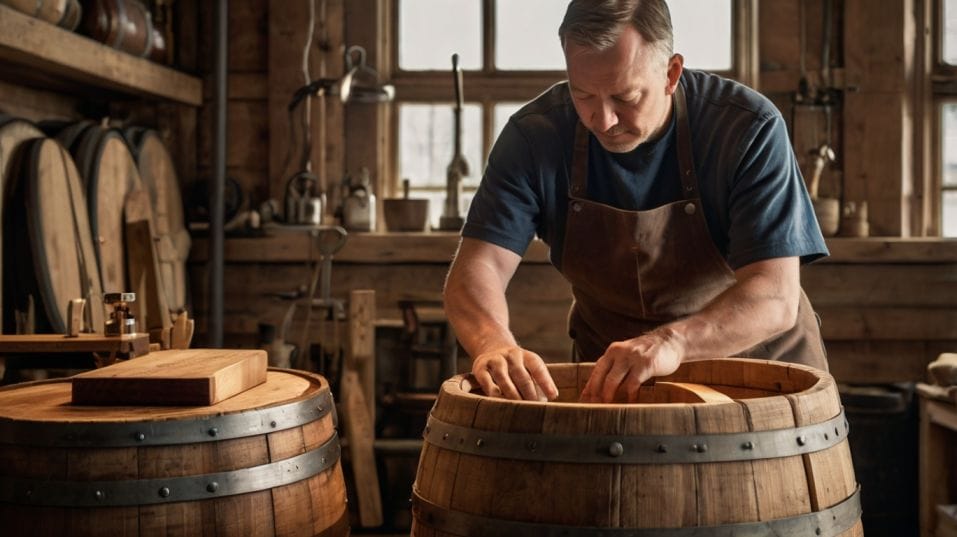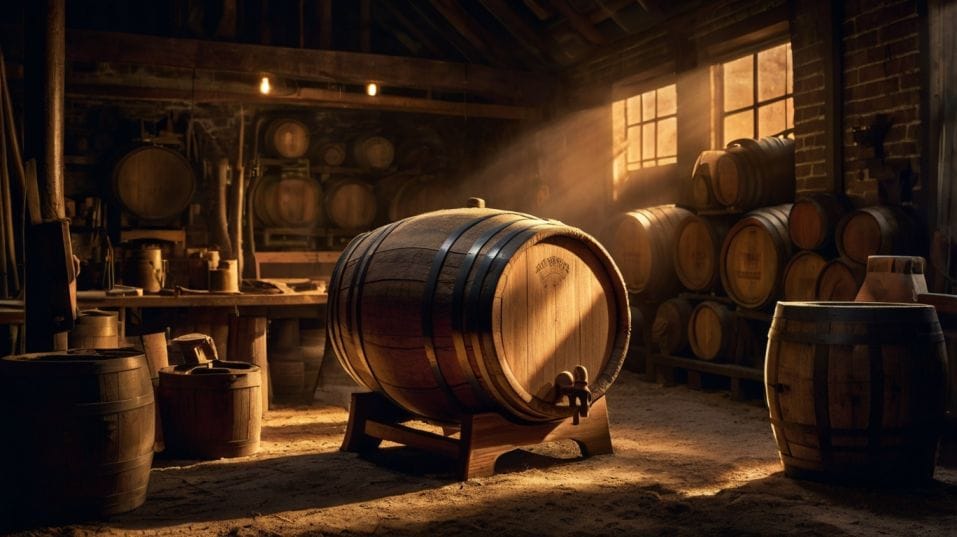How Barrels Are Made: A Quick Breakdown
Curious about whiskey? Discover how barrels shape flavor, aroma, and character—so you can taste, collect, and drink with more confidence.

What if the secret to understanding whiskey isn’t in the grain, proof, or even the distillery—but in the barrel? For anyone just stepping into the world of whiskey, this overlooked detail is where raw spirit becomes rich character.
It shapes flavor, aroma, and texture. Knowing how barrels are made isn't trivia—it’s your shortcut to tasting with insight. Start here, and every bottle you try after will make a lot more sense.
Why Oak?
Whiskey barrels start with oak. Not pine, not cedar, not some trendy tropical hardwood—oak. Specifically, American white oak (Quercus alba) and European oak (Quercus robur or Quercus petraea).
These aren’t random choices. They’re selected because they strike the right balance of durability, porosity, and chemical makeup.
Oak is tight-grained enough to hold liquid but porous enough to let whiskey breathe. It breaks down gracefully over time, releasing flavors like vanilla, baking spice, coconut, or dried fruit depending on species, seasoning, and toast.
It’s rich in compounds like lignin, tannin, and hemicellulose—each one reacting with the spirit during maturation to build complexity.
European oak, often used for sherry or wine casks, tends to yield spicier, tannic flavors with dried fruit notes.
American oak leans creamier and sweeter: think caramel, vanilla, and coconut. When you start recognizing that distinction, your palate moves from guessing to knowing.

Seasoning: Let Nature Work
Fresh-cut oak isn’t ready to become a barrel. It’s too green, too harsh.
So cooperages season the staves—planks of oak that will form the body of the barrel—by air-drying them for six months to three years. These stacks of wood sit exposed to sun, wind, and rain.
Why does this matter to you? Because seasoning is flavor prep. It leaches out bitter tannins and lowers the wood’s moisture content, but more importantly, it unlocks the wood’s potential for toasting and charring.
Skip this step or rush it with kiln-drying, and you end up with aggressive, underdeveloped flavors in the whiskey. The kind that fight your palate instead of seducing it.
Longer seasoning tends to produce a mellower barrel—one that imparts more layered, subtle character over time.
For collectors and serious tasters, understanding how long a cooperage seasons its oak can be a clue to how a whiskey will evolve in the glass.
Building the Barrel: No Nails, No Glue, Just Skill
Every barrel is a small engineering miracle. You’ve got dozens of staves—each slightly curved and tapered—fitted tightly together without any adhesive.
Iron hoops hold the shape. The inside isn’t lined or coated. It’s raw wood, perfectly fitted to keep liquid in and oxygen exchange going.
To bend the staves into that familiar barrel curve, coopers use steam and fire. The heat makes the oak pliable. It also begins unlocking flavor compounds. This is more than shaping wood—it’s the start of flavor design.
Think of it this way: the tighter and more precise the construction, the more consistent the aging. Sloppy barrels leak, over-oxidize, or create unpredictable results. A well-made barrel gives you flavor you can trust.
Toasting and Charring: Where Flavor Gets Built
Here’s where things get serious. Once the barrel is shaped, it’s toasted and often charred. These are controlled fire treatments—not cosmetic flourishes. They dictate how your whiskey will taste, smell, and finish.
Toasting
Toasting means applying moderate heat for longer periods to slowly break down lignin and hemicellulose.
This creates a matrix of flavor: vanillin, spice, nutty notes, roasted sugars. Toasted barrels give the whiskey depth, warmth, and complexity.
Charring
Charring takes it up a notch. High flames are blasted inside the barrel for a short burst—usually between 15 to 60 seconds.
This carbonizes the inner surface, creating a charcoal layer. The char serves two purposes: it acts as a natural filter and it unlocks bold flavors like smoke, spice, and sweet wood sugars.
Different char levels—often rated from #1 (light) to #4 (alligator char)—have different effects. A deeper char gives you bolder flavors faster but can also pull more intense oak tannins.
Lighter chars take longer to impact the whiskey but allow more elegant notes to emerge. Distillers choose based on what they want the final spirit to express.
When you taste a whiskey with intense caramel, dark chocolate, or toasted marshmallow notes, you're tasting the fingerprint of that fire.
The Barrel’s Role in Maturation
Once filled, a barrel isn’t passive. It’s active. It breathes. Temperature swings cause the whiskey to expand into the wood and contract back out, pulling flavors with it.
Over months and years, this push-pull action extracts sugars, tannins, acids, and oxygenates the spirit.
Where the barrel is stored—its position in the rickhouse, the climate, even the elevation—matters just as much as how it was made.
A barrel aging in a Kentucky summer behaves very differently from one sitting in a cool, damp warehouse in Scotland. Faster aging doesn’t mean better aging. Some flavors need time to unfurl.
The shape of the barrel also plays a role. Standard bourbon barrels hold 53 gallons. Sherry butts can hold 130. Smaller barrels speed up extraction but often rush development.
Larger ones slow things down and offer a gentler evolution. Neither is automatically better—it’s about matching the barrel to the whiskey's style and desired flavor arc.
Why This All Matters to You
Understanding how barrels are made—and how they work—lets you taste with intent. Instead of just reacting to a flavor, you’ll start predicting it.
You’ll know why that cask strength rye hits like cinnamon candy or why a single malt tastes like Christmas cake.
It’s not just the grain or the proof—it’s what the barrel brought to the table. You’ll read a label and know what “first-fill ex-bourbon cask” actually implies.
You’ll start recognizing when a whiskey was over-oaked or pulled from the barrel too early. You won’t fall for hype or vague tasting notes. You’ll trust your palate—and your process.
Final Thoughts
Barrels are the silent partner in every great whiskey. Built by hand, shaped by fire, seasoned by nature—they’re the most influential element in the entire process.
If you're here to taste better, collect smarter, or simply drink with more clarity, this is your starting line.
So take action. Pour two whiskeys aged in different barrels. Taste side by side. Ask questions. Dig into how they were aged, where they were stored, and what oak they used.
This isn’t about trivia—it’s about sharpening your palate and owning your experience. Learn the barrel. Then let it teach you how to taste.




